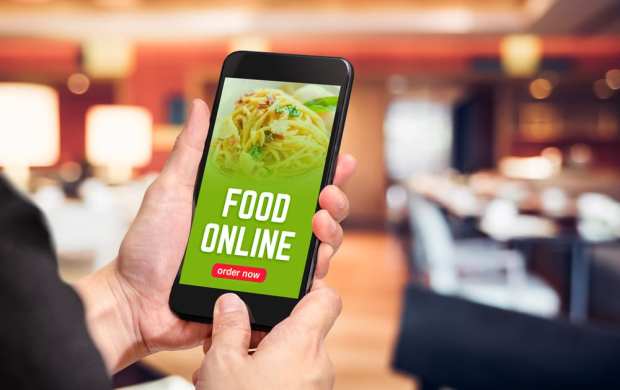Mobile Order-Ahead: It’s What’s For Dinner

In the mobile order-ahead space, consumers are not getting what they ordered – and that doesn’t mean burgers or salads. What consumers really want from mobile ordering is … more mobile ordering. A recent National Restaurant Association (NRA) survey found that 43 percent of consumers want to order via app, but only 18 percent of NRA members have it on the menu.
The same NRA survey found that 91 percent of consumers have ordered using a restaurant app or website over the past year, while six in 10 people are using a third-party service like DoorDash, Grubhub and Uber Eats. With only about 15 percent of ordered meals being consumed in actual restaurants (compared to 40 percent in the recent past), mobile order-ahead is becoming a make-or-break proposition in the unforgiving restaurant sector.
And working away in the background, as always, are the cyberthieves. Credit/debit card pilferage is their core trade, so naturally, they’ve latched onto gift cards in a big way. Gift cards now boast the highest rate of fraud attempts of all retail-issued cards – a dubious distinction that proves their popularity with everyone, including crooks. Some have taken to calling QSR gift cards “grift cards” because they’ve become a favorite target of cybercriminals.
A Side of Extra Revenue
Consumers love and demand mobile order-ahead,. It has also been a boon to quick-service restaurants (QSRs) and casual dining brands in terms of sheer throughput. A growing number of chains and eateries are deemphasizing their physical dining spaces due to the mobile order-ahead sea change.
The Mexican QSR Chipotle is one standout, with Q3 2019 sales up nearly 88 percent year over year thanks to digital preorders; revenues were up nearly 15 percent chainwide due to order-ahead. Chick-fil-A put a nice spin on order-ahead with a popular dine-in option for those who simply hate to wait. The Wahlburgers chain has added a loyalty component to its mobile order-ahead app, along with a touch of celebrity.
As QSRs restyle their businesses for app ordering, hackers have fixed their gaze on this sector. Safety solutions firm Sift asked consumers about their digital dining concerns, and found the following:
- 49 percent of respondents fear payments fraud will result from QSR app use.
- 41 percent fear dining apps might trigger an account takeover (ATO).
- 12 percent are worried their points and rewards will be tampered with.
More troubling from the perspective of individual QSR chains is the fact that 37 percent of customers surveyed would drop a QSR brand permanently if a fraud event occurred. Clearly there’s no room for error in the food business, which means a redoubling of anti-fraud efforts.
Would You Like Hacking with That?
Customer fast-food complaints used to be stuff like, “There’s a hair on my tray,” whereas now they’re just as likely to include stolen card numbers, inconvenience and anger – not a good look for QSRs.
That’s why Wahlburgers, for example, is using machine learning (ML) to scan masses of transactions for red flags, so that a human expert can review anything the artificial intelligence (AI) can’t resolve. Chili’s, Domino’s and Dunkin’ have all made major investments in secure transactions, including within their loyalty and gift card programs.
There are some clever ways that hackers whack gift cards, and store employees have also been caught as part of sting operations. Security experts encourage QSRs (and retailers in general) to control access to blank cards. A better way to reduce gift card grift is through AI monitoring of card resale sites and value-checking activity that may signal a botnet attack.
In the tasty new world of mobile order-ahead tech, there will always be bullies who want to take consumers’ lunch money. AI and machine learning are making the digital playground a safer place for customers to have their burrito and eat it, too – and not get ripped off in the process.
